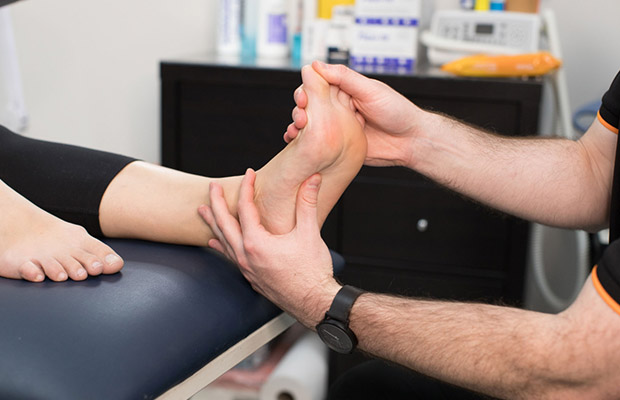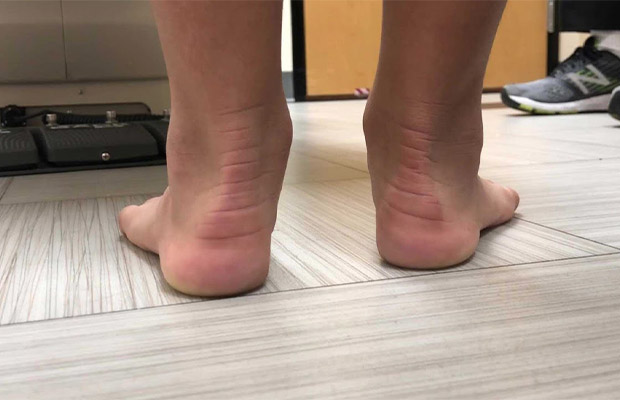Collapsed Arch Vs. Flat Feet: Everything You Should Know

Most people use the terms “collapsed arches” and “flat feet” interchangeably. There are clear differences between the two, even though there are some similarities.
An adult case of flat feet known as collapsed arches occurs when the ligament supporting the arch weakens or when the posterior tibial tendon becomes dysfunctional. Contrarily, flat feet refer to a condition in which the arch of the foot is depressed and the foot sole is almost entirely in contact with the ground.
Now that we know how to differentiate between the two types, let’s look at their specific symptoms.
More To Explore:
- How Do Flat Feet Affect Your Overall Health?
- Do Flat Feet Need Arch Support?
- Can Flat Feet Be Corrected In Adults?
Table of Contents
Symptoms And Causes Of Flat Feet
An abnormality that exists from birth is a flat foot. It frequently presents no issues and doesn’t need to be treated. But over time, problems could arise that would make the foot hurt.
At this stage, flat feet could cause your feet to tire easily, heel or arch pain, swollen feet, difficulty moving the foot, as well as pain in the back and leg.
Read More: Flat Feet : Types, Symptoms, Causes

Symptoms And Causes Of Collapsed Arches
When you buy shoes, you might talk about your arch (in terms of arch support), but what exactly is your arch? Your arch, which is located between the heel and the ball of your foot, helps to cushion the impact of walking while also facilitating movement, adding balance and stability. A network of muscles, tendons, and ligaments helps to support your arch, but the main tendon responsible for doing so is your posterior tibial tendon.
A collapsed arch, as the name suggests, occurs when your foot is flat or nearly flat and the arch has collapsed.) Walking, running, or even just standing for a long time can weaken your posterior tibial tendon over time.
Inflammation, known as tendonitis, and even tearing can result from overstretching this tendon as a result of an accident or repeated strain. Once your posterior tibial tendon is compromised, your arch loses its base of support and may flatten out, leading to fallen arches.
Some possible causes of collapsed arches include stretched or torn tendons, dysfunction of the posterior tibial tendon (either due to inflammation or damage), broken or dislocated bones, health conditions like rheumatoid arthritis, or nerve problems. Pregnancy, diabetes, aging, and obesity can all be contributing factors.
A collapsed arch can cause heel or arch pain similar to plantar fasciitis, issues with tiptoeing, ankle swelling, a flat appearance of the feet, and uneven shoe wear.
Signs Of Collapsed Arches And Flat Feet
It is simple to identify flat feet or collapsed arches. Expect symptoms like foot pain, stiffness, swelling, and general difficulty moving the foot. Pain may only affect the foot and ankle or it may radiate to the spine, calf, knee, thigh, or hip.
Your medical professional can quickly determine if you have flat feet or collapsed arches by watching how you stand or walk. If identifying it on your own is your goal, wet your feet and check to see if your footprint on the ground or on paper, after making contact with it, shows the entire sole of your foot.
You can also see how your shoes wear over time. Any unusual wear pattern might be a sign of an arch collapse. A flat foot or an arch that has collapsed does not appear when you push your big toes back as far as possible. Lastly, you can tell what is working well and what isn’t by testing the strength of certain muscles and tendons, like the posterior tibial tendon or the Achilles tendon.
How To Know If You Have High Arches Or Flat Feet?
When you’re standing, try to fit one or more fingers comfortably under the medial longitudinal arch, or the inner part of the middle of your foot, to see if you have a high arch. Most likely, you will also have a foot that is thinner and be able to fit into most shoes without feeling constrained on the sides.
Fallen arches are the opposite, making it possible that you cannot fit a finger under your arch. Many people will also have wider feet and need shoes that fit their feet better.
Differences Between Collapsed Arch And Flat Feet
While high-arched feet are supinated or turned outward, flat feet are frequently more turned inward or pronated.
Each person has a different level of overall foot health. With or without an arch higher than the Empire State Building, some people have pancake feet and experience no issues at all. However, if the underlying cause manifests, people who have normal or neutral feet can experience some of the worst injuries.
How To Treat Collapsed Arches And Flat Feet?
Most of the time, flat feet or collapsed arches don’t require medical attention. Your healthcare provider will, however, advise a conservative treatment plan to manage the signs and symptoms of flat feet and collapsed arches if you are experiencing pain, stiffness, or other problems related to your feet. This can include one or a combination of the following;
- Rest This is crucial when excessive use is the root cause of the collapsed arch. You can give them some time to rest by getting off your feet.
- Activity modification Avoiding activities with high impact, such as running and jumping, may be necessary.
- Weight loss If the ankle and arches are carrying too much weight, the arches may be forced to droop. So, losing weight will result in less pressure being put on the foot.
- Supportive footwear that fits well Flat-footed people should wear shoes with low heels and wide-toe boxes.
- Exercises for collapsed arches and flat feet Toe lifts and the towel scrunch are two exercises that can help heal collapsed arches and flat feet. These strengthen the right muscles in the foot’s arch.
- Physiotherapy This can be helpful to correct compensatory gait patterns that frequently appear in flatfoot situations.
- Custom orthotics and arch support insoles When there is significant nerve damage or muscle weakness, these are helpful. Good custom orthotics and arch support insoles cushion and support the feet, relieving pressure on the arch and preventing compensatory gait patterns. The numerous advantages of arch support include these.
Surgery may be advised if the conservative treatment is ineffective in reducing the symptoms. Bony spur removal, tendon enhancement, bone grafting, and bone fusion are all surgical procedures. To determine how it started and what kind of treatment should be used, the doctor will need to carefully review your medical history.
Tags: Collapsed Arch, Flat Feet